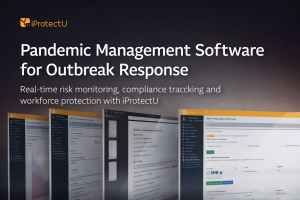Overview
Head protection is a type of personal protective equipment (PPE), a critical safety measure in many workplaces. From construction sites to industrial facilities, hard hats are important for safeguarding workers from potential head injuries. However, the effectiveness of head protection relies not only on its availability, but also on its proper enforcement, comfort, and suitability for the specific working conditions.
Let’s look at the Survey Results
According to a recent head protection survey, only 15% of workers who should be wearing head protection are wearing it correctly at all times. 90% of survey respondents were involved in making decisions related to head protection. 51% of respondents represented the construction and manufacturing industries. 67% of respondents worked for companies employing between 10-500 staff. The study findings give us some useful insights into the difficulties encountered by professionals on the ground. The three main areas highlighted as an issue regarding the wearing of head protection are: enforcement, comfort/fit; and heat-related concerns.

Addressing the Main Concerns
Enforcement
- Employers must strictly mandate the use of head protection in designated areas. This involves clear communication of safety policies, regular inspections, and disciplinary action for non-compliance.
- Workers should receive comprehensive training and education on the importance of head protection, proper selection, and correct wearing techniques.
- Regular inspections of head protection (as with all PPE) are crucial to ensure they are in good condition, free from damage, and properly fitted.
Comfort and Fit
- Head protection should be properly selected, based on the specific hazards present in the workplace. Factors such as impact resistance, penetration resistance, and electrical insulation should be considered.
- Adjustable, customisable suspension systems allow for a personalised fit, enhancing wearer comfort and reducing fatigue.
- Adequate ventilation systems can help dissipate heat and moisture, improving comfort and reducing the risk of heat-related illnesses.
Heat-Related Concerns
- Prolonged exposure to heat can lead to heat stress, which can impair employees’ cognitive function, reduce physical performance, and increase the risk of accidents.
- In severe cases, heat stress can lead to heatstroke, which is a life-threatening condition.
- Employers should implement cooling systems/strategies to mitigate heat-related risks, such as providing cooling breaks, access to shade, and hydration.
- In high-temperature environments, specialised heat-resistant head protection with enhanced cooling features, such as ventilation ports and cooling gels, can help reduce heat stress.
Smart Hard Hats are on the rise
Smart hard hats are revolutionising workplace safety due to their advanced features. These innovative helmets have sensors that can monitor a worker’s vital signs, detect hazardous environments, and even track their location on a job site.
Some types of smart hard hats include communication capabilities, which enable workers to connect with supervisors or emergency services with a simple press of a button! By leveraging technology, smart hard hats are enhancing safety protocols, improving efficiency, and empowering workers to operate in demanding environments with greater confidence.

Employers must ensure Head Protection is used properly
By prioritising enforcement, comfort, and heat-related concerns, employers can ensure that head protection is used effectively. This will no doubt contribute to a safer working environment. It is crucial to invest in quality head protection, provide suitable training, and address the specific needs of all workers. This can significantly reduce the risk of head injuries and improve overall workplace safety.








